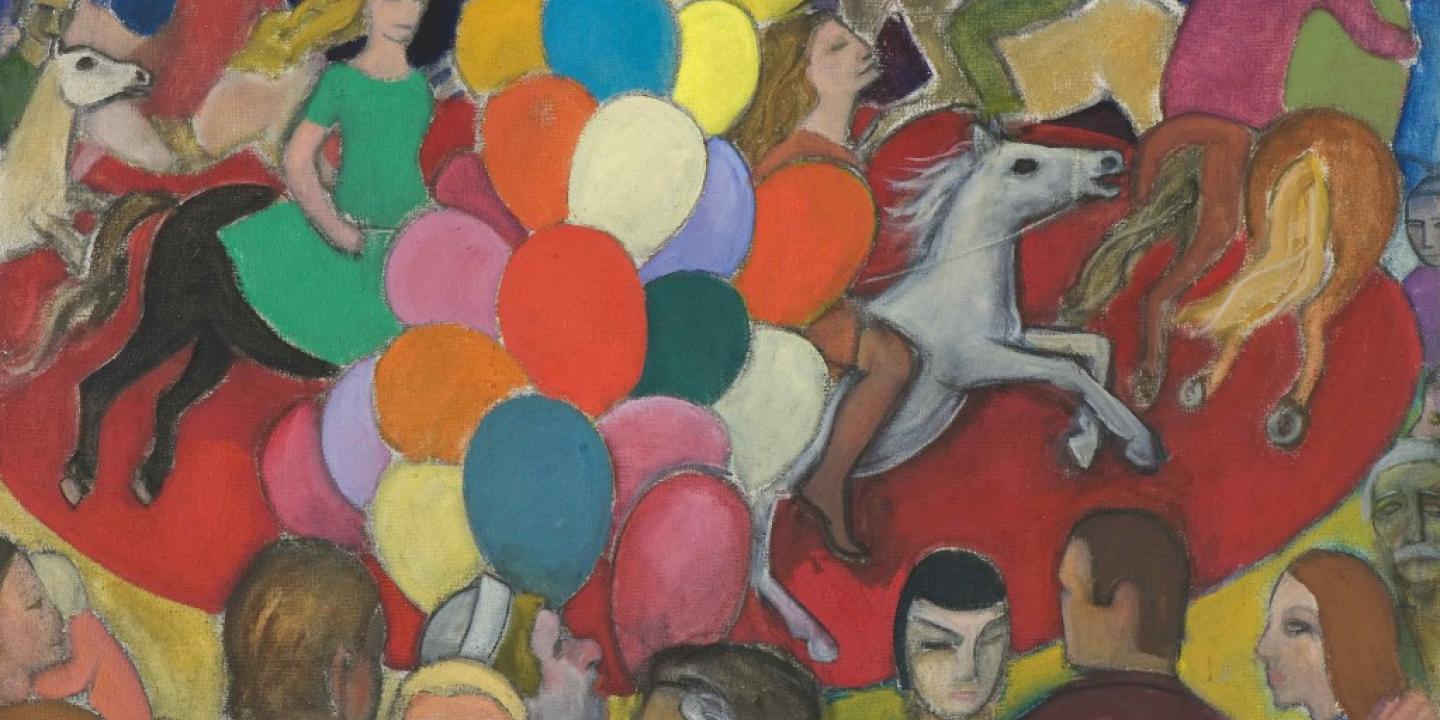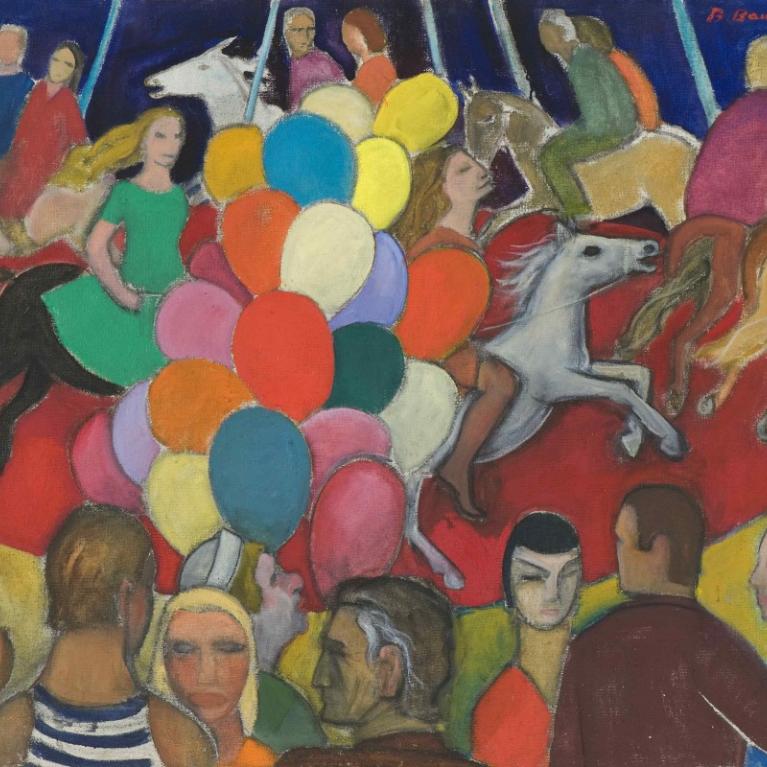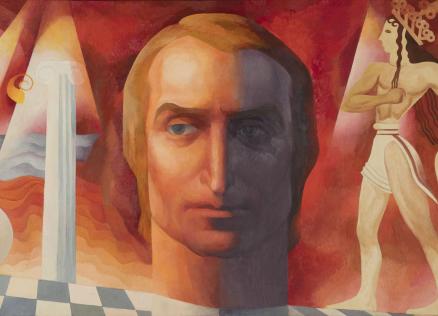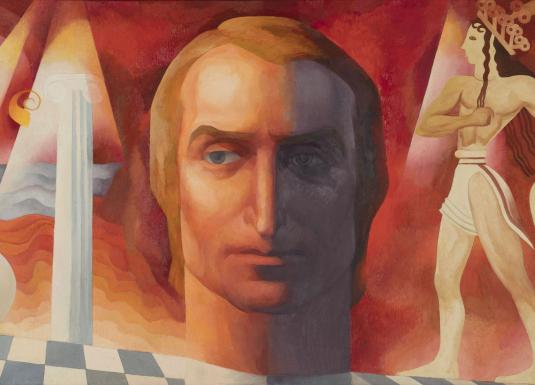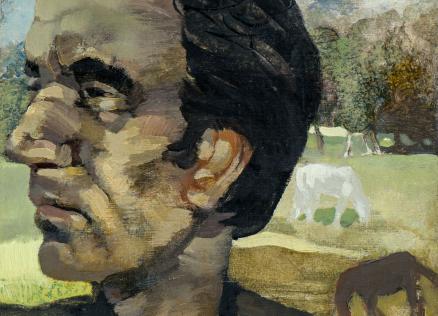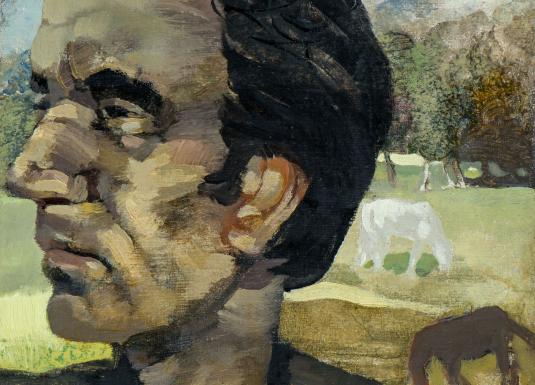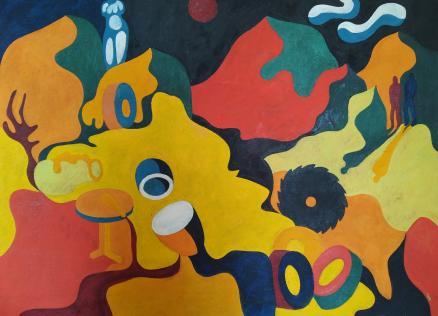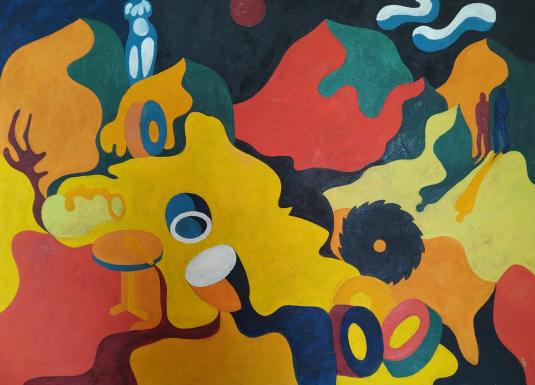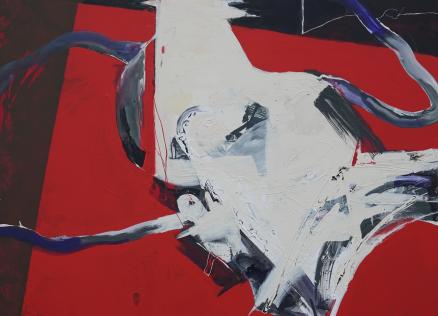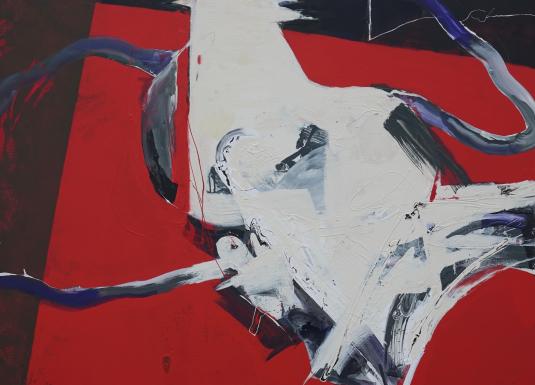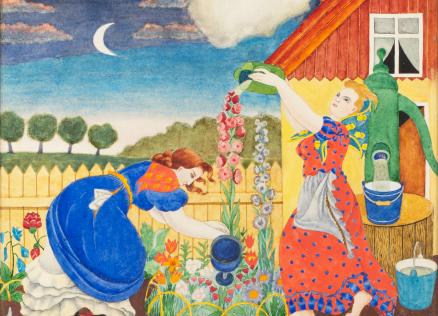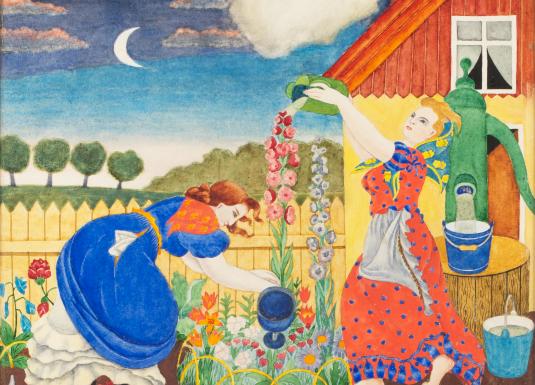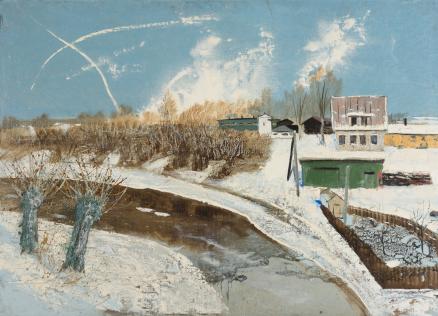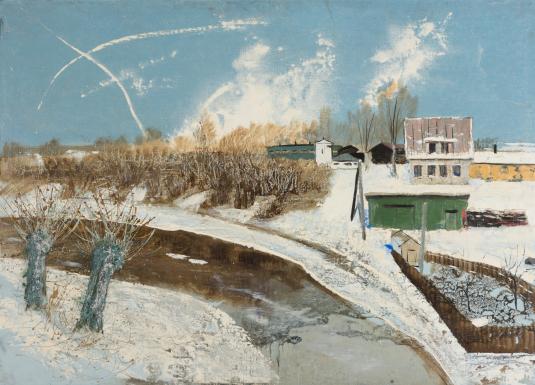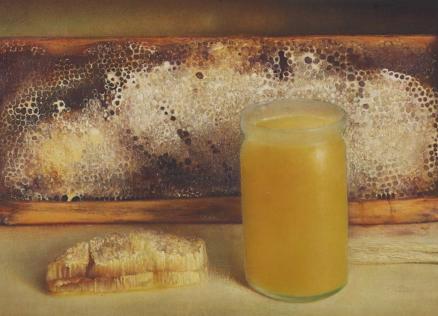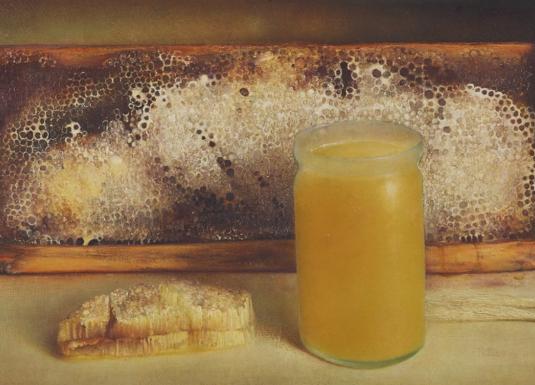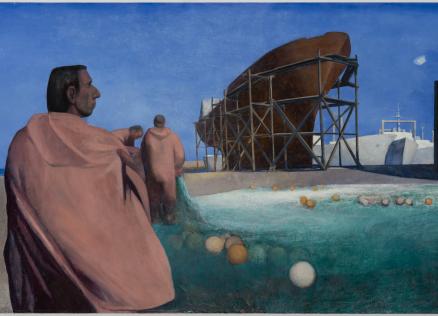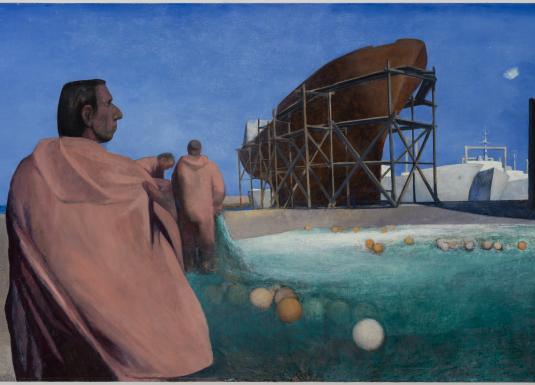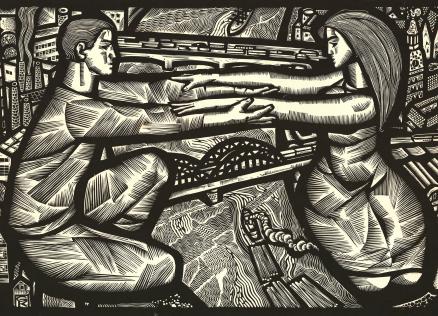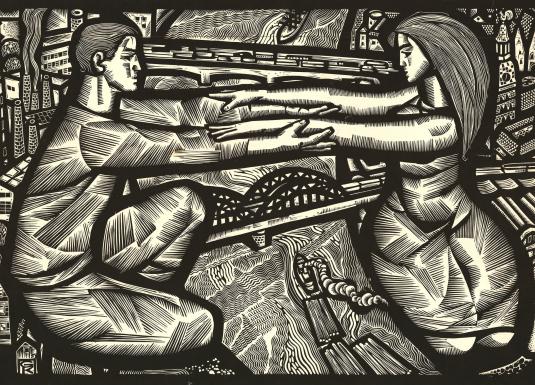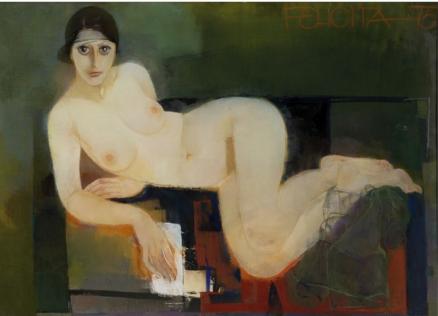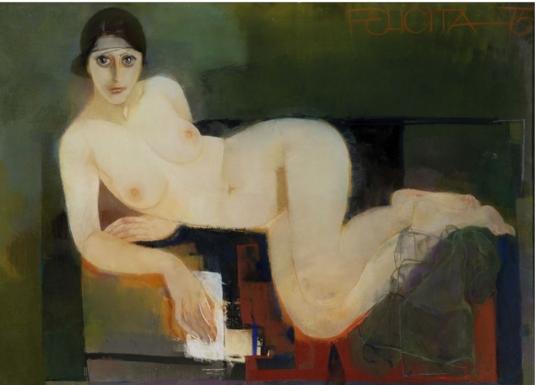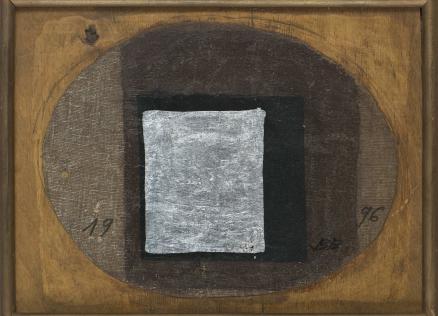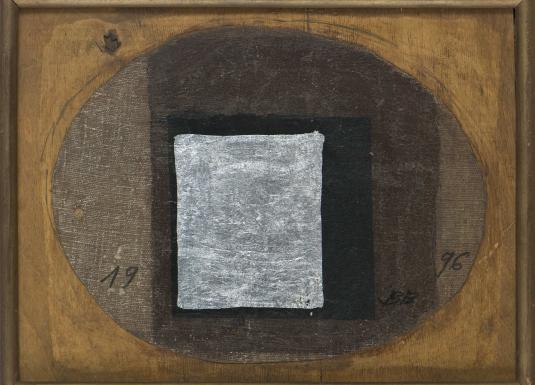Biruta Baumane (1922–2017). Painting
An exhibition of Biruta Baumane’s paintings, which continues the museum’s cycle of exhibitions "The Generation", will be on view in the 4th Floor Exhibition Halls of the main building of the Latvian National Museum of Art in Riga (Jaņa Rozentāla laukums 1) from 12 August to 10 September 2017.
In the second exhibition, which the Latvian National Museum of Art (LNMA) presents as part of the cycle of exhibitions The Generation, the visitors will see 26 paintings of Biruta Baumane (1922–2017) – the artist’s bequest to the museum. Among the most significant works of the gift are Self-Portrait at Night (1965), Country Musician (1968), the triptych Childhood (1983), Carrousel (1981) and End of the Feast (1978), as well as two compositions from the cycle Wedding in Latgale – Housekeepers (1967) and Women (1967). The newly-acquired exhibits are an outstanding addition to the body of the author’s works already included in the museum’s collection.
The dream of painter Biruta Baumane was ballet. Having passed the entry exams, she became a student at the ballet school of the Latvian National Opera, where she became friends with Taņa Suta (1923–2004) and ended up at the very heart of the art scene – the Aleksandra Beļcova and Romans Suta’s apartment in Elizabetes Street in Riga. There she had her first encounter with art.
The study year 1940–1941 in Romans Suta’s studio was brief, Biruta painted as though possessed, painting became the most important thing. From 1941 to 1948 Biruta Baumane was a student at the Department of Painting of the Art Academy of Latvia. In 1942, parallel to her studies at the Academy, she entered the Faculty of Philosophy at the University of Latvia, but the department was closed down, and Biruta, having practically no knowledge of French, moved to the Department of Romance Languages, only failing to complete the final exams. At the Art Academy, Biruta Baumane had the opportunity to learn from the sources of classical modernism – Valdemārs Tone, Jānis Liepiņš and Ģederts Eliass, adding her own restless temperament and joy of being.
The First Exhibition of Young Artists of the Latvian SSR in 1956 became a watershed in the cultural life of Latvia as that was the occasion when a generation of artists entered the scene with a new continuation of modernism – sotsmodernism or the harsh style. Biruta Baumane was difficult not to notice among them.
Pink and green are the colours of Biruta Baumane. The colour of life is tamed in plastically clear drawing, the luminosity of oil paint is muted to the structure of thin, almost brittle pigment. This laconic, sometimes harsh painterly language did not see significant change over time, her subjects also staid the same – small towns in Kurzeme or streets on the outskirts of Riga, fishing harbours, rural baths, fairs and the circus, portraits and still lifes. The female nudes are special – enclosed in a red cadmium line, without chiaroscuro. They are more than studies of the models – they show both fascination with the plasticity of form and the artist’s inner life. The nude can also be painted as a still-life or landscape with shivers and solitude.
Models and portraits of friends, their eyes and mouths – these are windows unto the entire person, event or time, that contain much joy, love and sadness. Biruta Baumane was always fascinated with the powdered faces of Harlequins, Pierrot and clowns – white face, red, mute lips and hopeless eyes. The clowns are self-portraits; they are among people yet alone, ashamed of their solitude.
She often painted nights. These are beautiful and carefree, where friends meet, life blooms, there are discoveries and beginnings of new paintings. The Group Portrait from 1969 (currently on view in the permanent display of the LNMA) is among them – Boriss Bērziņš, Aleksandrs Stankevičs, Vilis Ozols, Biruta Baumane, and Gunārs Cīlītis walking through Riga at night. And also the street cleaner, the messenger of the morning who sweeps away the time. Biruta has an insanely pink scarf around her neck and the face is left blank, without colour – from the sleepless night, from life or from love.
Self-Portrait at Night (1965) – alone, lit window behind the back in darkness where people live, where it is warm and cosy, that is what Biruta Baumane longs for the most, and the sky has that blue-green tint of the approaching midsummer which always induces the yearning for unbridled life.
On a midsummer’s eve Biruta Baumane travelled to Latgale to violinist Jānis Seimanovičs to a real rural farmstead. Soon the artist was invited there for a wedding and sketch albums filled up in insatiable excitement, the celebration did not cease for three whole days, there were songs, dances and merrymaking at white-laid tables, musician Dilbeks was playing the accordion. It later became the Country Musician (1968) and the seven compositions from the cycle Wedding in Latgale (1967). Composition In the Yard, already at the museum, is joined by Women and Housekeepers, for which Helēna Romanova was posing – she was also an outstanding model for Liliom (1975), where it was important to show Helēna’s overflowing joie de vivre, singing Once again the sky is broken and Rest During Hay-Time (both works are in the collection of the LNMA).
The Latgale cycle and the self-portrait were key works in the 1968 exhibition in Moscow (in Luzhniki, at the Italian pavilion, together with Herberts Siliņš and Laimdots Mūrnieks), which was like a personal exhibition for each of the artists. Biruta Baumane exhibited 76 works. The Tretyakov Gallery wanted to acquire Self-Portrait at Night, but the author refused, coming to Moscow in person, after persistent phone calls and letters, to say that she will keep the work.
The triptych begins with the work End of the Feast (1978) – a grey, monochrome painting, the colours are gone, everyone has left, the last door has been left open. The emptiness was so familiar at that moment, spreading across canvas quickly and easily. In Carrousel (1981) everything is spinning around and repeating, the clown holds a bunch of the brightest balloons, and everything is so ethereal – now it is here, the next moment it pops and is gone. In Childhood (1983) the child is swinging, the sun is barely rising, the soil is heavy and rich, the girl’s palm is open, nothing has begun yet. This work was the most difficult for the artist, it is the time that has gone the furthest.
The romanticism of adventure captivated Biruta Baumane. An inviting motif caught suddenly in a city by the sea, a harbour view or a solitary pedestrian in the sleepy streets of a small town – a simple subject in a somewhat melancholy mood. The uneventful Sunday calm, a child or a cat and the light sky. Ventspils harbour was a thrill that drew closer and brought the artist to the world of men from ships. Wind Over Ventspils (1971) – no matter how picturesque, Ventspils is no longer enough for the artist, she wants the wind, the air of a journey around the world, the longing for home at sea and longing for the sea at home.
Biruta Baumane’s first personal exhibition took place at the Artists’ House in Riga in 1966 and since then extensive exhibitions have been held in Latvia and abroad. An important source of information for scholars is Biruta Baumane’s book Es dzīvoju (I Live, 1995). Catalogues and albums have been published about the artist’s work, as well as Aija Nodieva’s monograph Dzīves krāsas (The Colours of Life, 1991), while in 2010 a voluminous album edited by Anda Treija, director of Daugava art gallery, was published with reproductions of more than 400 of master’s works.
The collection of the Latvian National Museum of Art holds 84 of Biruta Baumane’s paintings.
ABOUT THE CYCLE OF EXHIBITIONS THE GENERATION
Each generation belongs to an era. In its new cycle of exhibitions The Generation, the Latvian National Museum of Art (LNMA) focuses on art of the second half of the 20th century. The cycle’s programme, which will be realised from 2016 to 2020 in the 4th Floor Exhibition Halls of the main building of the LNMA, includes separate expositions dedicated to such important figures in Latvian art as Daina Riņķe, Henrijs Klēbahs, Līvija Endzelīna, Gunārs Cīlītis, Rita Valnere, Aleksandrs Stankēvičs, Rūsiņš Rozīte, and Gunārs Krollis.
It is a generation of artists which were born during the first Latvian Republic in the 1920s–30s and went through dramatic epochal shifts. The free yet authoritarian Kārlis Ulmanis’ Latvia was followed by one occupation, then another, a war, another occupation and the introduction of Socialist Realism in art. Yet this was the generation which possessed youth, power and energy in the period of totalitarianism. On the one hand – communist ideology, on the other – the artists’ bohemian life imbued with idealistic hope.
There were many who in their youthful enthusiasm wanted to create “new art” or even “free art”. In 1956, the 3rd Congress of the Artists’ Union of Latvia took place in the elevated mood of the Khrushchev Thaw. It marked the arrival of young artists, who pointed to the necessity to establish a separate Section of Young Artists and to organise special young artists’ exhibitions. The First Exhibition of Young Artists’ Works was organised in 1956, and since then these annual shows became an influential event in the artistic calendar. The young artists of that time were active participants in exhibitions.
The cycle of exhibitions The Generation, dedicated to the young of the 1950s–60s, began with the show of Felicita Pauļuka’s works. The second exhibition is dedicated to the memory of Biruta Baumane.
EXHIBITION CURATOR:
Ilze Putniņa, Curator of the Latvian Painting Collection ARSENĀLS (2nd Half of the 20th – 21st Century), Latvian National Museum of Art
CURATOR OF THE CYCLE OF EXHIBITIONS THE GENERATION:
Dr. art. Elita Ansone, Head of Collections and Scientific Research Department ARSENĀLS (2nd Half of the 20th – 21st Century), Latvian National Museum of Art
